Alwan Codex 2 - Psalter - early 20th century
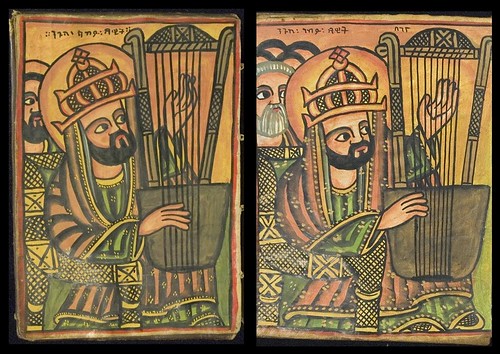
Left: Alwan Codex 2; Right: Alwan Codex 28


Alwan Codex 28 - Commentary on the Praises of
Mary and Gate of Light, Amharic - 20th century.
Mary and Gate of Light, Amharic - 20th century.

Alwan Codex 27 - Psalter - 19th/20th centuries
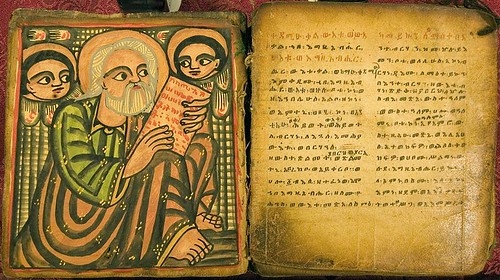
Eliza Codex 17 - Gospel of John; Horologium of Abba Giyorgis
for the night hours, incomplete - 16th and 18th centuries (composite)
for the night hours, incomplete - 16th and 18th centuries (composite)
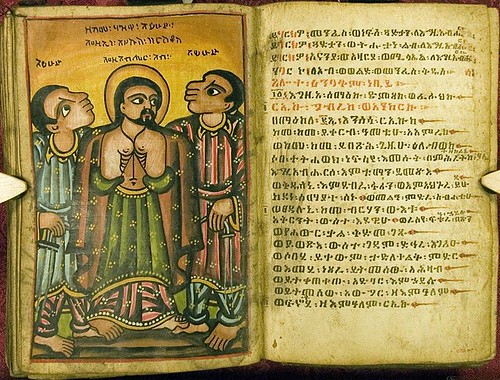
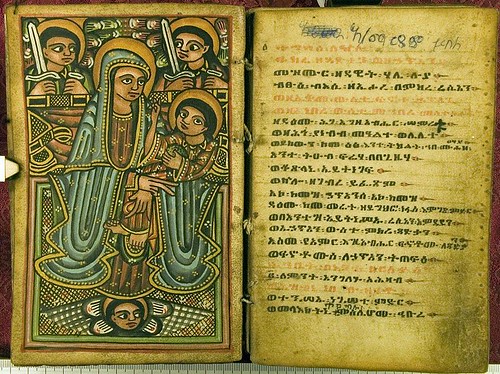
Eliza Codex 23 - Psalter - early 20th century


Eliza Codex 24 - Psalter - 20th century.
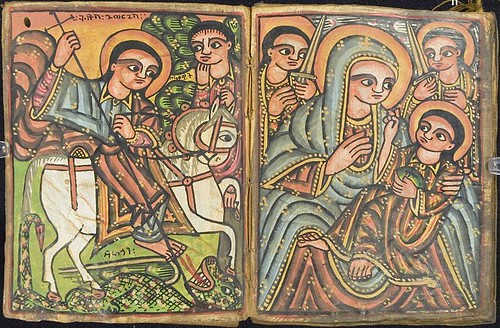
Eliza Codex 26 -
Pillars of Mystery; Hymn to Mary, "All hosts of heaven glorify you"; Admonition; Amharic Commentary on Our Father; Amharic Commentary on Hail Mary; Wise saying in Amharic; Hymns to God, "All spiritual hosts of angels" - 19th/20th centuries.

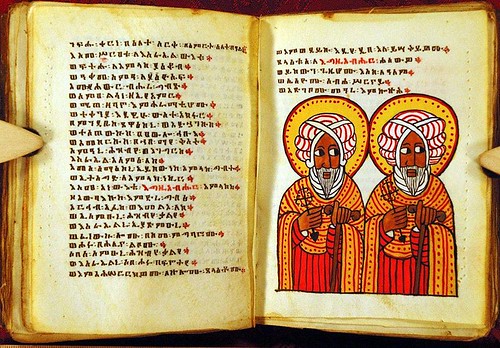

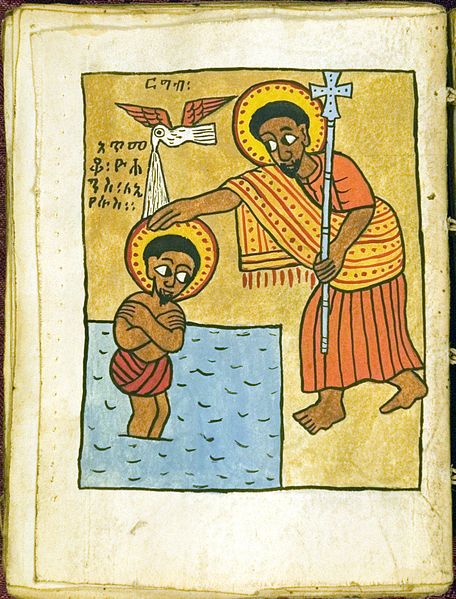
University of Oregon Museum of Natural and Cultural
History, Shelf Mark 10-844 - Psalter - 20th century.
History, Shelf Mark 10-844 - Psalter - 20th century.

The twelve apostles and the Synodicon
"The standing figures of the twelve apostles acts as a frontispiece for a collection of texts called the Synodicon, the proceedings of the early church councils, which set out the agreed principles of the Christian faith. [...] The twelve apostles form a link between Jesus and the early church. The apostles came to be seen as part of the inspired foundational stage of Christianity. The symbolism of the twelve apostles also emphasised the continuity of the early church with the twelve tribes of Israel."
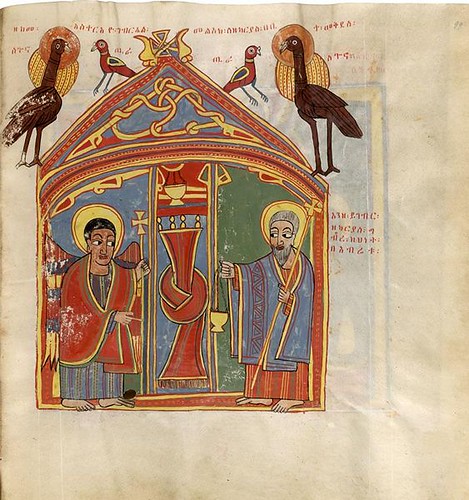
"The last canon table of Eusebius [not shown] is followed by an illustration of the Annunciation to Zechariah, the first in a series of full page miniatures depicting major events surrounding the life of Christ. Following the accepted tradition of illuminated books, these miniatures are grouped together and placed before the Gospel texts. The number of miniatures vary according to different traditions.
In the Ethiopian tradition artists do not confine themselves to the life of Christ as related in the four Gospels, but also draw inspiration from other works that were excluded from the canon of the New Testament, such as the Testament of Our Lord, and the Miracles of Jesus.
This miniature depicts the Angel Gabriel appearing to Zechariah while he was serving as a priest in the Temple in Jerusalem. The Angel announces that Zechariah will have a son, John the Baptist, who will be the forerunner of Christ."
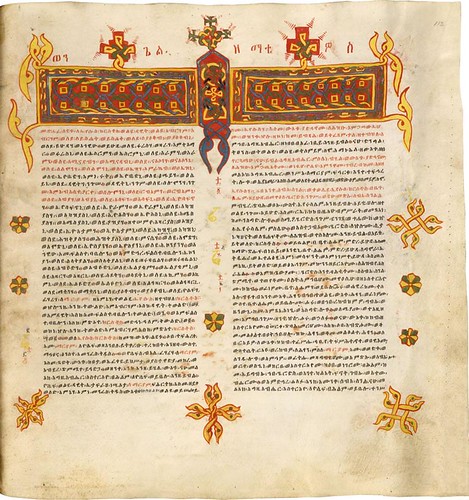
The Gospel of Matthew
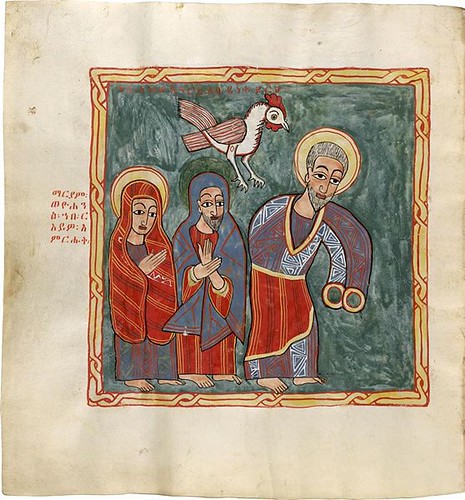
"[F]rom the night that Jesus was betrayed and captured by the authorities [...] the apostle Peter is depicted with Mary and John. The cockerel placed behind Peter's head is a reminder of Jesus saying to Peter, "Truly, I say to you this very night before the cock crows twice you will deny me three times". Peter hotly denies this, but later that night while waiting in the high priest's courtyard for news of Jesus after his arrest, he denied being a follower of Jesus three times."
The above four images are taken from British Library Additional. MS 59874.
"This lavishly illustrated 17th-century manuscript contains the first eight books of the Old Testament (the Octateuch), the four Gospels, and several canons of church councils. It is written in a small elegant script with decorative borders and devices and has many lively illustrations in bold colours.
The Ethiopian church was one of five Oriental Orthodox churches which rejected the council of Chalcedon in 451 A.D., thus forming a separate tradition from the Eastern Orthodox and Roman Catholic churches. At the time this manuscript was produced, Ethiopia was undergoing a religious and artistic revival. The volume is a faithful copy of a 15th-century manuscript, and was probably commissioned by Emperor Iyasu (ruled 1682-1706). Historical notes in the manuscript suggest it was copied for the church of Debra Berhan Selassie, which remains one of Ethiopia's most well-known churches.
The manuscript is part of the Magdala Collection, which was given to the British Museum library [now the British Library] by the Secretary of State for India in 1868. The collection had been assembled by the Ethiopian Emperor Tewodros [King Theodore] in the fortress of Magdala, which fell into British hands following a battle against Theodore in 1867."
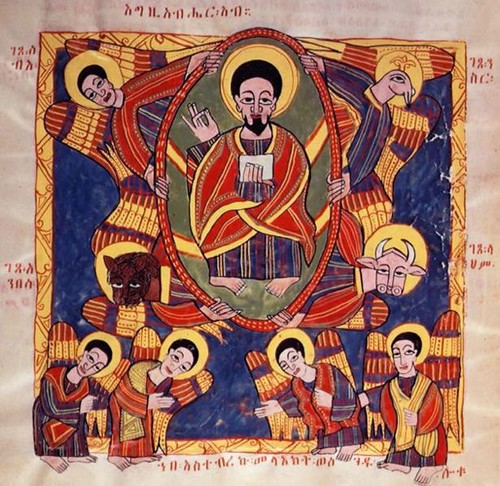
British Library Or. MS 481, f.110v [link]
"This striking manuscript comes from the oldest independent country in Africa. It was commissioned in the last years of the 17th century by Emperor Iyasu I Yohannes of Ethiopia for use in his royal city of Gondar. Generously illuminated with distinctive miniature paintings and highly decorative coloured borders, this is one of the most beautiful of the Library's Ethiopian manuscripts. Its many illustrations include Moses, Aaron, Ruth, Eusebius, John and Carpanius, scenes from the life of Christ and portraits of the Evangelists."
"Christianity took root slowly in Ethiopia from the third decade of the 4th century. Some 150 years later, missionaries from Syria translated the Bible into Ethiopic. The Islamic conquest of neighbouring Egypt in 640-641 isolated Ethiopia from other Christian countries for the best part of a millennium. The Ethiopic Church was able to maintain only tenuous links with the rest of Christianity through the Coptic Church in Egypt, which managed to survive under its country’s Islamic rulers."
---------------------------------------
In 2005, Steve Delamarter, Professor of Old Testament at George Fox Evangelical Seminary in Oregon, received a telephone call from a local ex-army fellow who had purchased an unusual manuscript in the mid-60s during deployment in Ethiopia, and wanted to know more about it.
Professor Delamarter made plans to digitise the work and for the images to be displayed online by the Hill Museum and Manuscripts Library (HMML) at St. John's University in Collegeville, Minnesota. From such a modest beginning, Professor Delamarter has since been on something of a crusade to obtain the cooperation and permission from a large number of private owners and institutions, particularly across the United States, to arrange for a raft of biblical and magical Ethiopian manuscripts to be digitised and uploaded to the HMML website.
I am grateful that Professor Delamarter has agreed to my extracting and uploading a selection of the biblical manuscript pages from a range of codices to wikimedia, where I was surprised to find no other Ethiopian manuscript images available. The wonderful illustrations, more suggestive of outsider art than miniature religious illuminations at times, is a body of work that is far beyond my modest abilities to reduce into any meaningful written context, so I'll just add links to material I've found most interesting.
- The SGD Collection of Ethiopian Manuscript Images at the Vivarium site, Hill Museum & Manuscript Library.
- Four of the last five images are from the British Library Turning The Pages website (Additional. MS 59874). I highly recommend the non-flash version which is much easier to use (and less of a burden on bandwidth) than the gimmicky flash version (top right).
- Ethiopian Manuscripts at wikimedia (the whole collection has been posted above).
- Professor Delamarter has made two posts this year to the Society of Biblical Literature forum which give the background to the Ethiopian Manuscript Imaging Project: Post One; Post Two.
- HMML also have an older, quite extensive exhibition site, with reasonably in-depth commentary: Cultural Traditions and Religion in Ethiopia.
- AFROMET = Association For the Return Of the Maqdala Ethiopian Treasures -- relating to the 1868 pillaging by British troops of Ethiopian heritage objects, including manuscripts, and the efforts to have them returned.
- A History of the Christian Church in Ethiopia.
- Ethiopia on the Internet - the Stanford University link list.
- Later: The Ge'ez or Ethiopic script at Omniglot.
- Much later: [pdf 2.3Mb] - 'Illuminated Manuscripts in Ethiopia: Origin. Meaning and Manufacture of two manuscripts Illuminating the Apocalyypse in Qwesqwam und Därasgä Maryam' by Dorothea McEwan, The Warburg Institute, University of London. (Thanks Patrick)

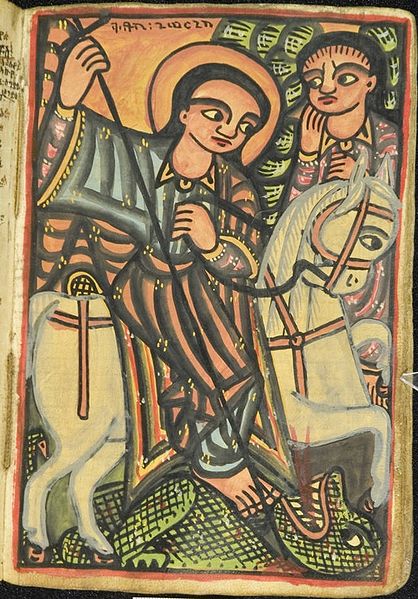
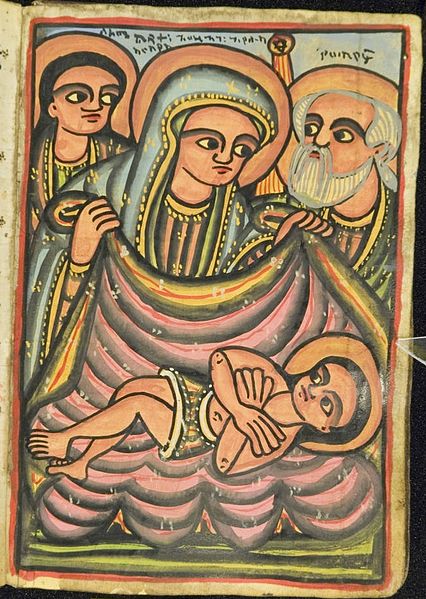



















7 comments :
Gorgeous pictures. The artwork is gorgeous. I love religious icons, even though I am not religious myself. Do you have any Russian icons? They are gorgeous as well.
Historia
Thanks historia. I have seen snatches of Russian iconographic material in passing but it's one of those very esoteric and scarily large subjects that, while I don't quite avoid it exactly, I haven't come across a site that is broadly simplistic enough to have sparked me into action. But never say never!
Speaking of iconography, Scribal Terror has some interesting comparative notes about the iconography represented here and in Egyptian coptic manuscripts. Well worth seeing.
Amazing works! The colours and faces are soooo coool.
Also, I didn't know there was an octateuch, but thanks to you I now know that it's the Pentateuch + Ruth, Joshua and Judges.
Cool. Thank you, keep it coming!
Beautiful! They remind me of Kells and Darrow, of course not in their intrincate detail, but the colours and devout attention to how the message is conveyed.
Thanks!
This is really interesting. I'm studying Ethiopian art as part of my degree in and have gathered a lot of information from many sources including Addis Ababa's Institute of Ethnographical Studies but this is a welcome find. Thanks.
Great blog ,love the artwork!
Many thanks for these pictures. I have linked to these in my Africa blog. http://www.sociolingo.wordpress.com
Post a Comment
Comments are all moderated so don't waste your time spamming: they will never show up.
If you include ANY links that aren't pertinent to the blog post or discussion they will be deleted and a rash will break out in your underwear.
Also: please play the ball and not the person.
Note: only a member of this blog may post a comment.